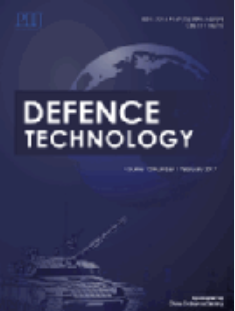高性能聚醚酰亚胺(ULTEM)对 MEX 3D 打印关键通用控制参数的关键质量指标:国防工业个性化设备的发展前景
IF 5
Q1 ENGINEERING, MULTIDISCIPLINARY
引用次数: 0
摘要
快速成型制造(AM)可以提供传统技术无法提供的定制零件。增材制造的一个重要参数是零件的质量,这是材料挤压三维打印(3D-P)程序的结果。这在与国防有关的应用中非常重要,因为这些应用需要保证最佳性能。通过考虑六个控制参数,即填充百分比、层高、沉积角度、移动速度、喷嘴和床层温度,对聚醚酰亚胺 3D-P 试样的质量进行了检测。质量指标包括均方根(q)和平均(a)粗糙度、孔隙率以及实际尺寸与标称尺寸的偏差。检测采用光学轮廓仪、光学显微镜和微型计算机断层扫描。采用田口试验设计法,在五个副本上进行了二十五次试验,每个控制参数分为五个等级。另外还进行了两次确认运行,以确保可靠性。构建了预测方程,用控制参数来表示质量指标。对实验数据采用了三种建模方法来比较其效率,即线性回归模型(LRM)、减二次回归模型和二次回归模型(QRM)。QRM 是最准确的模型,但即使考虑到较简单的 LRM 模型,其差异仍然不大。本文章由计算机程序翻译,如有差异,请以英文原文为准。

Critical quality indicators of high-performance polyetherimide (ULTEM) over the MEX 3D printing key generic control parameters: Prospects for personalized equipment in the defense industry
Additive Manufacturing (AM) can provide customized parts that conventional techniques fail to deliver. One important parameter in AM is the quality of the parts, as a result of the material extrusion 3D printing (3D-P) procedure. This can be very important in defense-related applications, where optimum performance needs to be guaranteed. The quality of the Polyetherimide 3D-P specimens was examined by considering six control parameters, namely, infill percentage, layer height, deposition angle, travel speed, nozzle, and bed temperature. The quality indicators were the root mean square (Rq) and average (Ra) roughness, porosity, and the actual to nominal dimensional deviation. The examination was performed with optical profilometry, optical microscopy, and micro-computed tomography scanning. The Taguchi design of experiments was applied, with twenty-five runs, five levels for each control parameter, on five replicas. Two additional confirmation runs were conducted, to ensure reliability. Prediction equations were constructed to express the quality indicators in terms of the control parameters. Three modeling approaches were applied to the experimental data, to compare their efficiency, i.e., Linear Regression Model (LRM), Reduced Quadratic Regression Model, and Quadratic Regression Model (QRM). QRM was the most accurate one, still the differences were not high even considering the simpler LRM model.
求助全文
通过发布文献求助,成功后即可免费获取论文全文。
去求助
来源期刊

Defence Technology(防务技术)
Mechanical Engineering, Control and Systems Engineering, Industrial and Manufacturing Engineering
CiteScore
8.70
自引率
0.00%
发文量
728
审稿时长
25 days
期刊介绍:
Defence Technology, a peer reviewed journal, is published monthly and aims to become the best international academic exchange platform for the research related to defence technology. It publishes original research papers having direct bearing on defence, with a balanced coverage on analytical, experimental, numerical simulation and applied investigations. It covers various disciplines of science, technology and engineering.
 求助内容:
求助内容: 应助结果提醒方式:
应助结果提醒方式:


